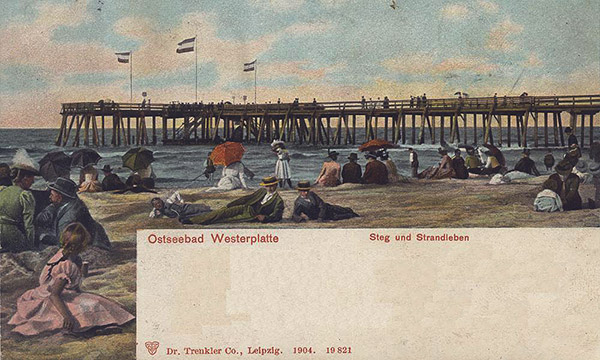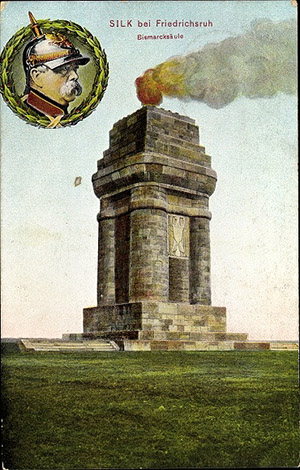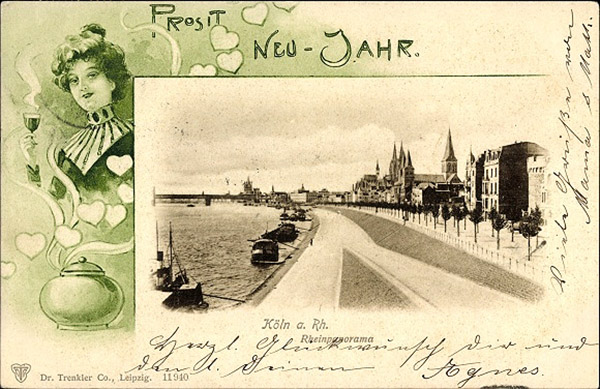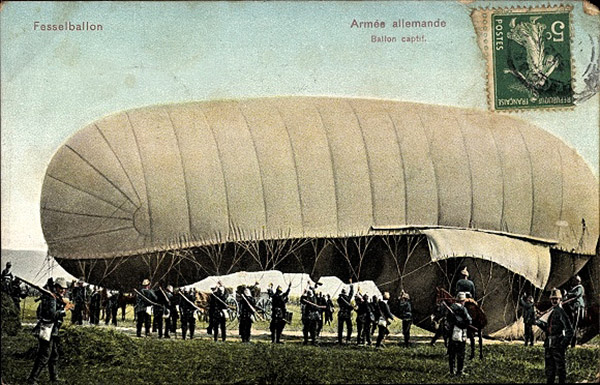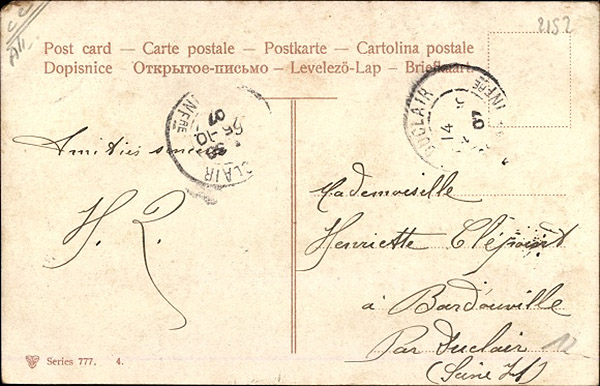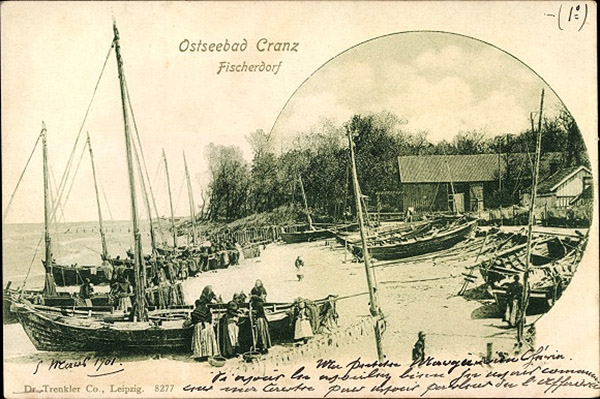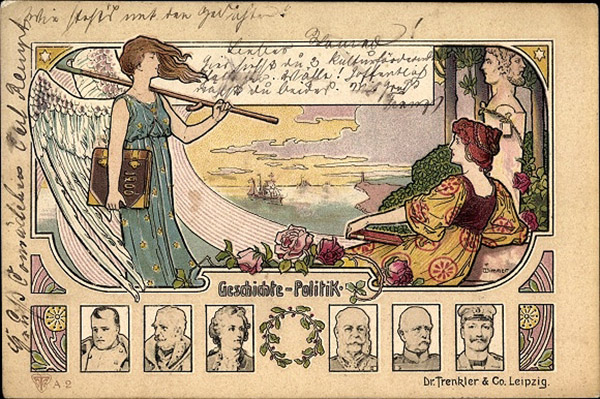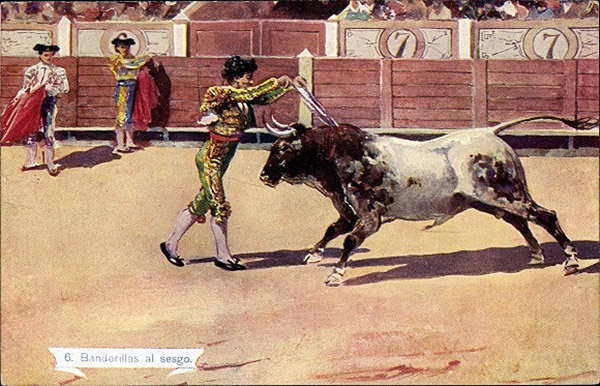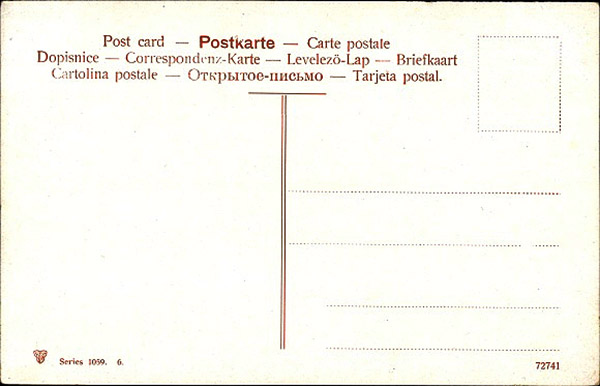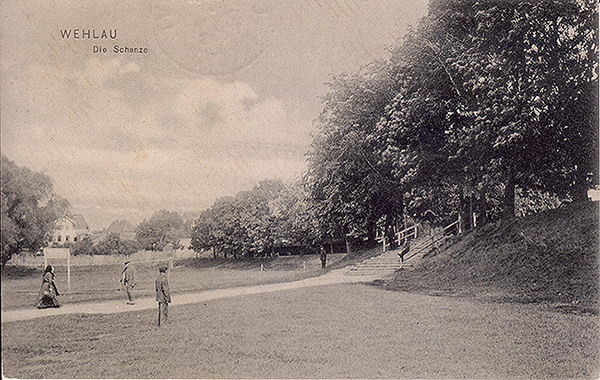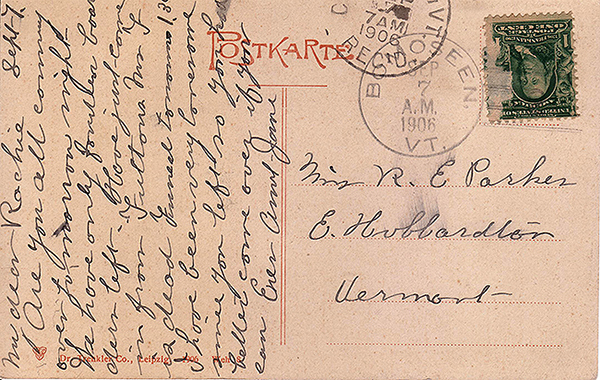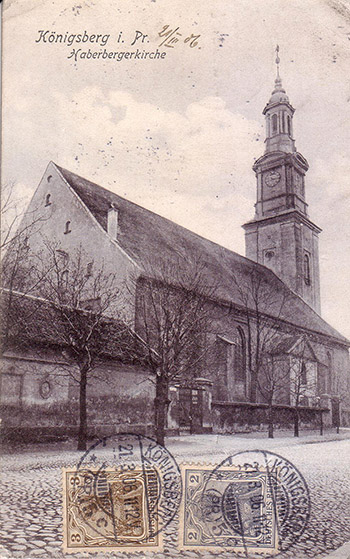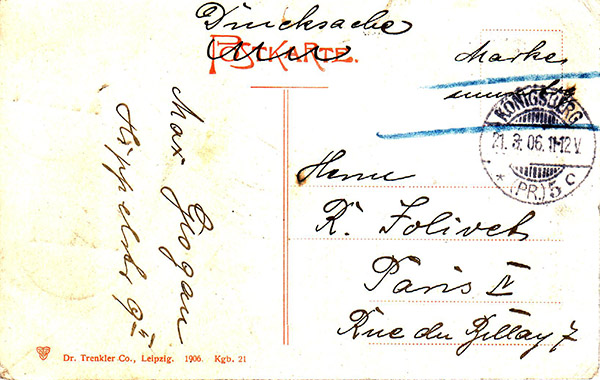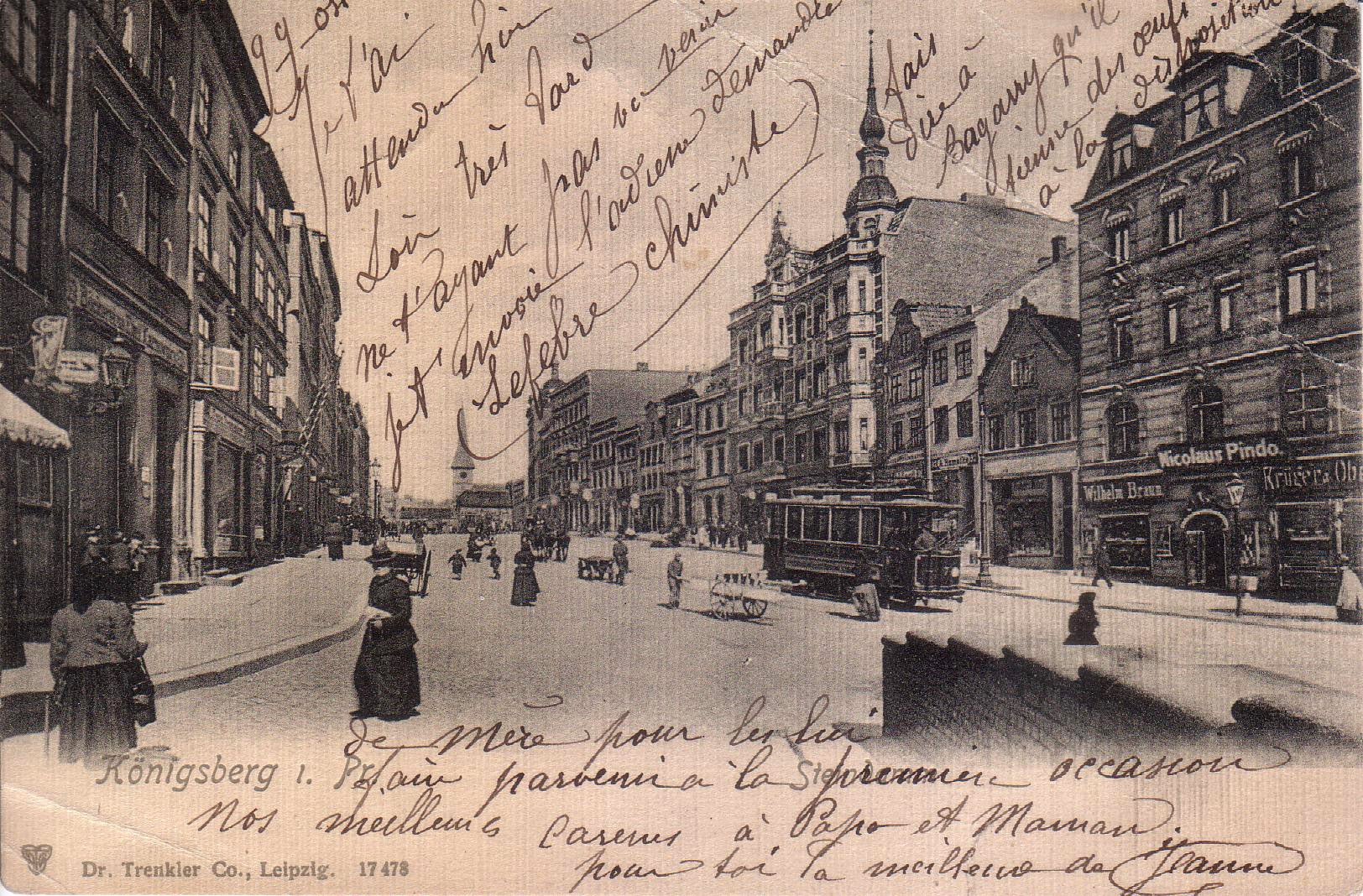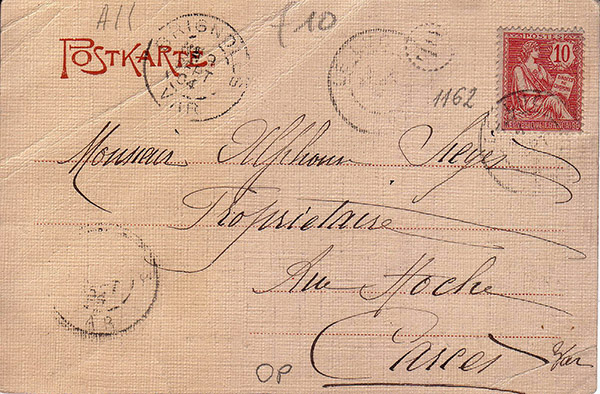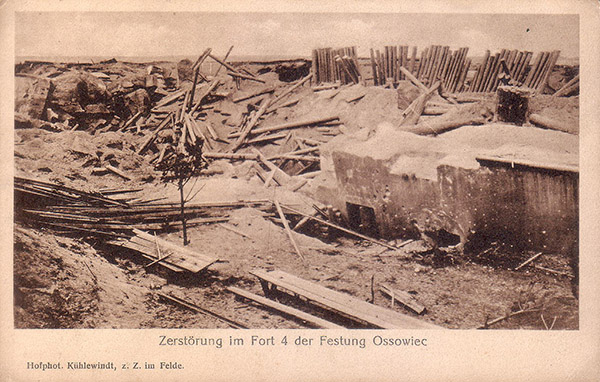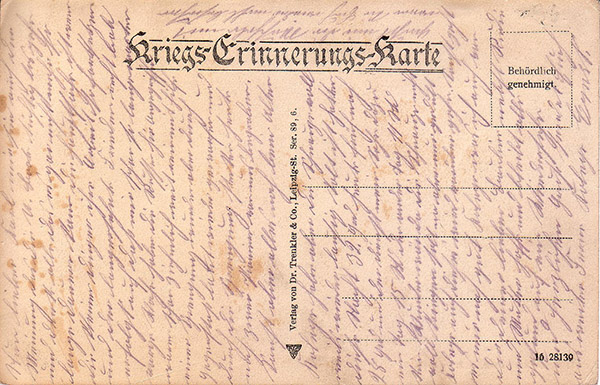Dr. Trenkler & Co.
Dr. Trenkler & Co. was a Leipzig-based company that was one of the world's leading producers of postcards in the 1900s.
Early years
The company was founded on April 1, 1894 under the name "Phototechnical Institute Dr. Drenkler & Co." The stated areas of activity were: collotype printing, letterpress printing, printing machines for lithographic printing of images; specialization: art cards. The production was located at Leipzig, Dorotheenstr. 54. (Dorotheenstr. 54, Leipzig-Th.) The owners of the company were Dr. Bruno Trenkler, a pharmacist, and Karl Gustav Jarig, who was probably a business partner from the very beginning of the company.
Bruno Trenkler was born in 1863 and studied chemistry at the University of Würzburg, graduating in 1887. Recognizing the great commercial potential of postcards, Trenkler and Jarig started a small printing shop with five workers in a few rooms. Jarig handled the commercial aspects, while Trenkler focused on production and improving the printing processes.
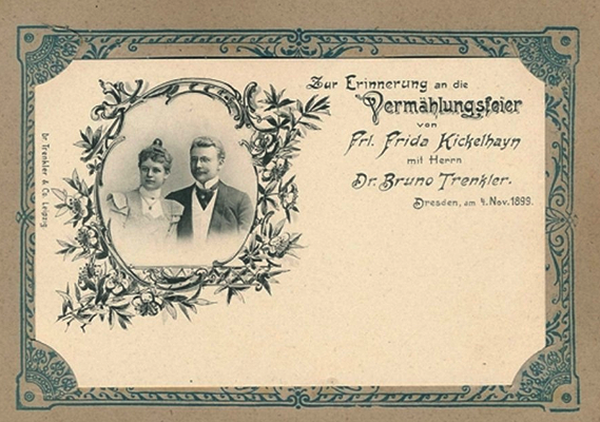
The printing business of Dr. Trenkler & Co. for the production of postcards prospered so much that it soon became necessary to expand the production capacity. In 1901, a plot of land was purchased in the suburb of Leipzig called Stotteritz, Eichstadtstrasse 11, on which in 1904 a huge factory building was built, where the production and sale of printed products were combined.
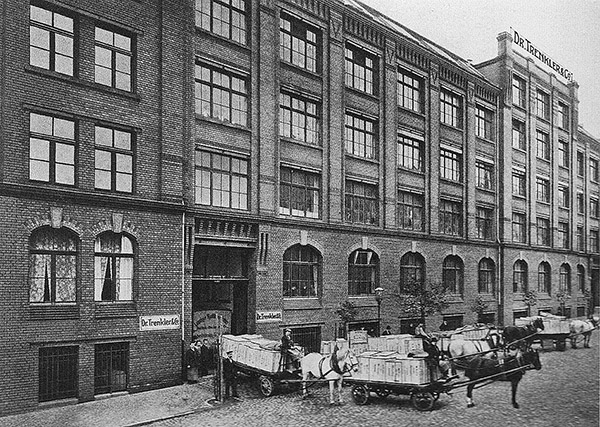
The Autochrome Dispute Between Dr. Trenkler & Co. and Louis Glaser
Printing processes were constantly being improved, and innovations were immediately introduced into the production of postcards. To the halftone raster illustration or photograph (in black ink on a letterpress) 3-5 colors were added on an offset press. Typically, red, blue, or yellow printing inks were used (bright red, red or dark red, bright blue, and so on), depending on the desired final color print.
The major German postcard publishers had their own registered trade names for a process based on the Autochrome process, but using their own little secrets and tricks for preparing and coloring the printing plates. The resourceful Louis Glaser of Leipzig was the first to register his color palette, using the term Autochrome in his logo in 1899. After some time, Glaser even managed to register the word exclusively for his business, although the term was common in the printing trade.
Dr. Trenkler & Co. used the term Autochrome in their price lists and advertisements in Der Photograph in 1900-1901. Louis Glaser asked the employees of Dr. Trenkler to stop using this special term or to describe the quality they offered as being similar to Louis Glaser's Autochrome process. Needless to say, Dr. Trenkler & Co. refused to do so, as they had a competitive advantage in many markets around the world. And this served them well years later.
In 1902, Gustav Jarig, the managing director of Dr. Trenkler, tried to obtain the rights to the term "Autochrome" but was unsuccessful. Louis Glaser sued Jarig. Meanwhile, Dr. Trenkler used the words "Autochromotype" and "Auto-Chr." on January 23, 1906. Jarig was acquitted. But not for long, and the next court overturned the acquittal. The story continued. A second trial took place on January 7, 1907, Jarig was found guilty of illegal use of the trademark in advertising, but not for use in price lists. He was fined 400 marks, and Louis Glaser 500 marks. Both sides appealed. The final judgment of 13 February 1908 states that Jarig is found guilty, ordered to pay the above amounts, plus an additional 1,000 marks to Glaser to ensure that he does not bring suit against Dr. Trenkler & Co. in the future, plus court costs and the costs of three half-page advertisements for the publication of this judgment in the three main commercial postcard periodicals, including Jarig's own publication, Die Postkarte, of Dr. Trenkler & Co.
In addition to the lost lawsuit, the company's operations were negatively affected by the printers' strike that began in Leipzig in June 1906. The company managed to reach a compromise with the printers' union only at the end of August. Thus, the printing presses of "Dr. Trenkler" were idle for almost 11 weeks.
At the beginning of December 1909, Dr. Trenkler & Co. announced the sale of its entire postcard printing business. The entire postcard printing business of Trenkler was transferred to Trinks & Co. of Leipzig. And in the summer of the following year, Gustav Jarig also terminated his business partnership with Trenkler.
In the 1913 directory, the company is described as specializing in the printing of art postcards, catalogs, posters, and letterheads. The company employed about 500 people. The company's printing house had 26 letterpress presses, 14 phototype presses, and 24 lithographic printing presses. And about 70 other devices for various purposes. Considering that these printing presses were designed for medium and large format printing, one can imagine the impressive volumes of art postcards that the Trenkler company could produce given a sufficient number of existing orders.
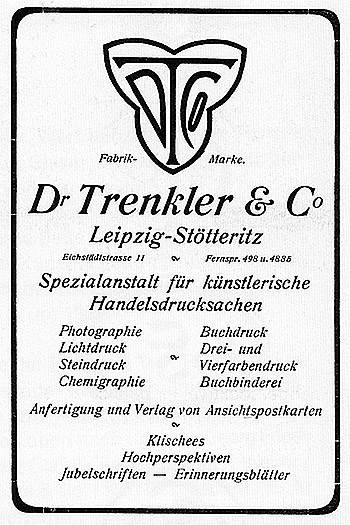
The following figures show the volume of production of Dr. Trenkler & Co. postcards: the company produced 1.5 million black and white and another 1.5 million color (combined printing process) postcards per week. Perhaps in some years of the greatest popularity of postcards, the weekly production volume of postcards could exceed 3 million pieces!
One thing is certain: you will find postcards printed by Dr. Trenkler & Co. almost everywhere in the world! Most of the Trenkler postcards were of good to excellent quality. For their quality, Dr. Trenkler's printed products were repeatedly awarded (gold medal at the Dresden Photographic Exhibition, 1909; honorary diplomas at the World Exhibition in Brussels, 1910; the Royal Saxon Prize at the Dresden Hygiene Exhibition, 1911, etc.)
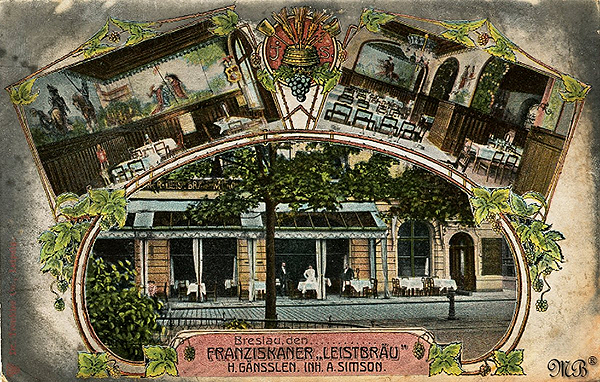
The company employed between 8 and 10 photographers, who were constantly travelling around Germany and the rest of the world, taking pictures for future postcards. The company printed postcards for the Netherlands, Belgium, the United States (before protective duties came into effect) and Great Britain. The company had a monopoly on the sale of postcards of Greece, granted by the Greek government. Dr. Trenkler entered the British market in 1902, opening an office at 45 Farrington Street in London. The company's sales agent was the publisher Frederick Hartmann. From the Trenkler production code, which gives the year, it can be seen that they continued to export large quantities of postcards to Great Britain after 1910, competing with British printers such as Valentine's & Sons. And Trenckler & Co. was just one of several major German printers that were hunting for customers in Britain as the popularity of postcards waned.
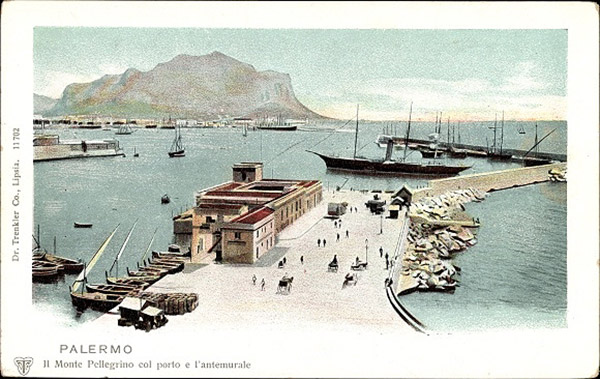
After the departure of Gustav Yarig
After Gustav Jarig left the company, Dr. Bruno Trenkler and Maj Hoffmann became the owners. Another member of the company's board was Dr. J. H. V. Rostosky (possibly G. Trenkler's son-in-law). A few isolated postcards from 1911-1913 are known, where the company "Trenkler" is listed not only as a printing house, but also again as a publishing house.
Then came the war, and Dr. Trenkler profited from the huge demand for postcards, as did many other postcard makers. But as the war went on, shortages of paper and chemicals, and more and more employees being sent to the front, created a difficult situation.
In the 1921 directory published by Klimsch, Trenckler & Co. is listed as having the same production facilities and activities (with the addition of art reproduction) as in 1913, but with only 400 employees. Dr. Rostosky now had three colleagues ("assistant directors"): F. H. Beyer, Wilhelm A. Dormann, Gustav Adolf Fere. They tried to keep the business going, although times were far from easy. New printing processes (offset printing and engraving) were introduced, and the old lithographic and phototype printing presses were replaced.
The 1925 directory also contains the same entry about the activities of "Dr. Trenkler", but at that time it was already "Aktiengesellschaft (AG)" - a joint-stock company with a capital of 800,000 Reichsmarks. On September 10, 1926, the founder of the company, Bruno Trenkler, died. From a modern perspective, this was the end of the once large company, although the business continued to operate for about two more years. The company "Trenkler & Co. AG" was now managed by directors F. Hugo Beyer, Wilg. A. Dormann and Gustav A. Fehre.
By March 31, 1928 (the end of the financial year of Trenckler AG), financial losses amounted to 368,056 Reichsmarks. On March 31, 1929, they reached 499,688 Reichsmarks, which meant the loss of more than half of the company's capital and led to the bankruptcy of Trenckler AG. Most of the huge Trenckler plant was later occupied by a company called Dr. Dietz & Ritter, which manufactured and sold radio equipment.
Trenkler's "New" Business

On March 28, 1928, a company was founded under the name "Dr. Trenkler-Verlag GmbH" and the address: Leipzig, district C1, Wittenbergerstrasse 15. The managing director was the former director of "Trenkler & Co. AG" Gustav Fehre. This enterprise is described as a book publishing house. The address shows who was behind the creation of this new company: "E. Pinkau & Co. AG" - a former competitor who took everything valuable and necessary for the operation of his own company. The affairs of the Pinkau company, according to their business report published on November 5, 1929, were going satisfactorily, and the shareholders received a dividend of 10%.
The second "successor" of Trenkler & Co. AG was found in the Leipzig address book of 1929 under "Postcard Printers": "Dr. Trenkler Postkarte GmbH" with the address: Dessauerstrasse 13, which is very close to the Pinkau business. The address book of 1931/32 still mentions "Trenkler Postkarte GmbH" as a printing house for graphic publications and an art publisher. This somewhat mysterious company is said to have been run by Pinkau as well and later merged with this company without public announcement. The personnel of the former Dr. Trenkler & Co. AG are said to have worked for Trenkler-Postkarte GmbH on its equipment. However, reliable data and reference information on this company have not yet been found.
Dr. Trenkler-Verlag GmbH
Gustav Feret continued to work for the Pinkau company not only as the managing director of the above-mentioned firm, but later he also became the director of a second publishing business called the Deutsche Kirchenwelt (religious publication). The name Dr. Trenkler-Verlag GmbH, Leipzig, often the first letters D.T.F.L. or D.T.F., are found only on a few postcards issued after 1945. Sometimes they were inside the postmark field and therefore hidden under the postmark. Leipziger Handel was the first book printed after the end of World War II, on the commercial activities of Leipzig. It was distributed in 1946 and was not allowed to indicate the printer, only the publisher. Here we again find a mention of "D.T.F." at the address: Wittenbergerstrasse 15. This enterprise is described as a general art publishing house, printing maps and picture books.
The 1949 edition of the Leipzig address book (published shortly before the German Democratic Republic was officially proclaimed) lists "Dr. Trenkler-Verlags GmbH" as the address of "Pinkau & Co. AG". It is possible that Johannes Pinkau used "D.T.F.L." as a publishing house and what remained of his war-torn business as a printing house (phototype printing, printing on bromine photographic paper). J. Pinkau died in 1958, the names of his companies, which he had managed for so long, disappeared by the end of 1972, when the Pinkau company, together with "D.T.F.L.", became part of the VEB Bromsilberdruck.
Postcard marking by Doctor Trenkler
C. G. Röder of Leipzig preferred green ink for the inscriptions on the back of the postcard (though not always). Dr. Trenkler & Co. often used red ink for the back and also for the signature under the picture on the front of the postcard until 1914.
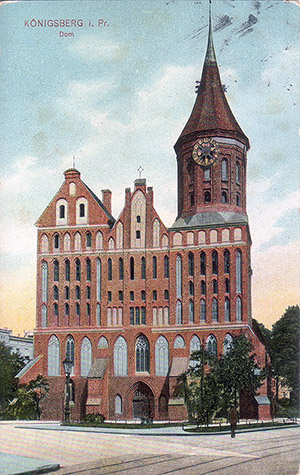
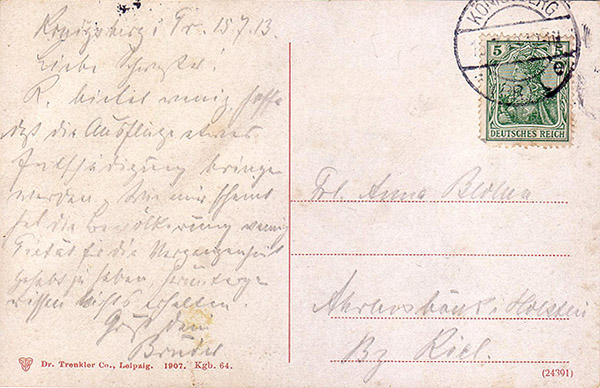
Usually we find the Dr. Trenkler logo with or without the company name and the postcard number (sometimes also the year) on the front of the postcard at a time when the back of the postcard was not yet divided into the address and message fields. Then this information or just the codes were transferred to the back. Often they occupy the "traditional" position in the lower right corner. On their own story postcards (and series dedicated to a certain city/region) the information/logo is usually located in the lower left corner.
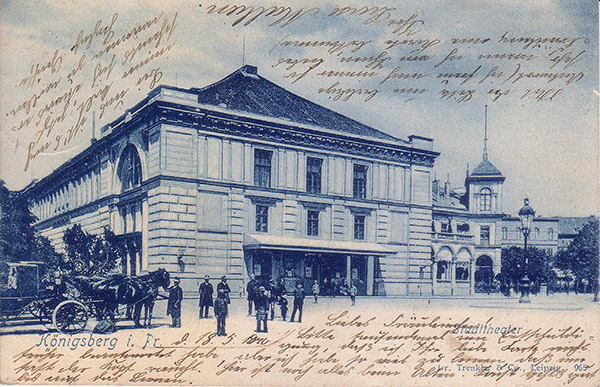
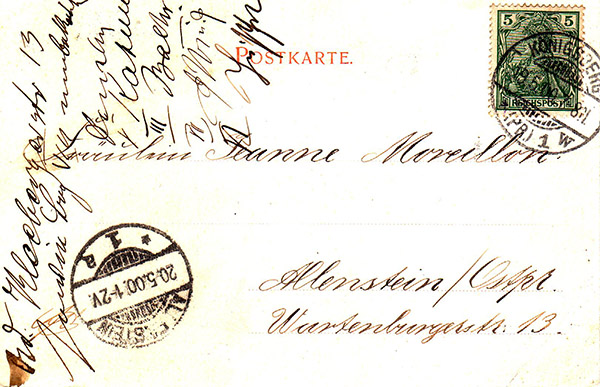
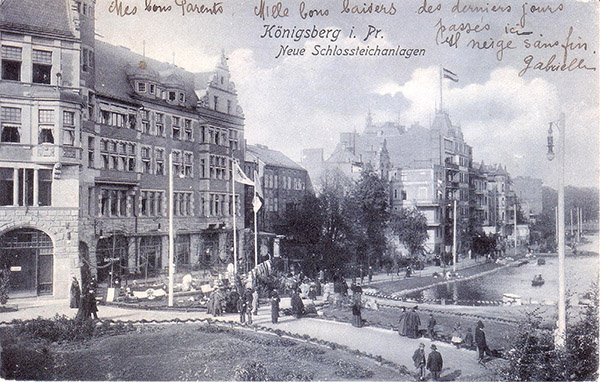
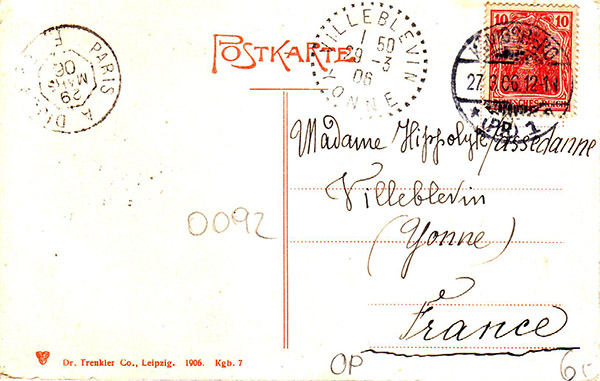
Cards printed for foreign customers are a little more complicated. Some customers requested that the Trenkler card number be placed in the postmark field. Therefore, it is sometimes difficult to determine whether the cards were printed by Trenkler. After 1920, the codes are sometimes located in the postmark field and in the lower left corner, but more often in the lower right corner.
Dr. Trenkler & Co. also used several specially developed spellings of the word "Postkarte" (postcard) which are clearly distinguishable.


In the early years of its existence, Dr. Trenkler & Co. apparently numbered their cards sequentially, with the numbering period most likely being longer than a calendar year. During the period of explosive growth in the popularity of cards, a more sophisticated system of accounting for orders and print runs became necessary. In 1902-1906, sequential numbering of print runs for each calendar year appeared, with separate numbering for some countries and, possibly, for some large customers.
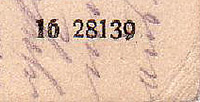
In 1907-1920, production codes became more organized. Two signs (year) were printed in bold, then, in regular font, the numbers of the printed issue itself were printed. Similar printed codes can be found for view postcards literally all over the world. For series dedicated to individual cities and for non-view postcards, other codes were used.
The production codes used by Trenckler AG are different from the previous ones. The change of codes most likely took place in 1922, with the transformation of the company into a joint-stock company (Aktiengesellschaft)
The new code is constructed much like the previous one. Instead of two digits representing the year in bold type, we see one small letter before the postcard number. The letters are u/c/s/e/r/t/i . The numbers that follow range from 3,000 to 70,000. There is a postcard with the letter t and the very large number 94,328. It is not yet clear whether each small letter represents a separate year or whether the letters were used in alphabetical order.
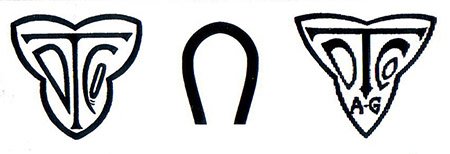


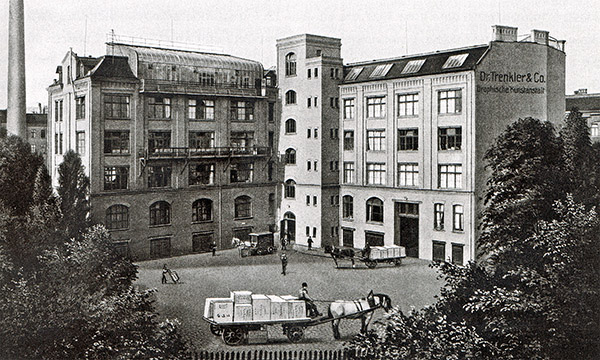
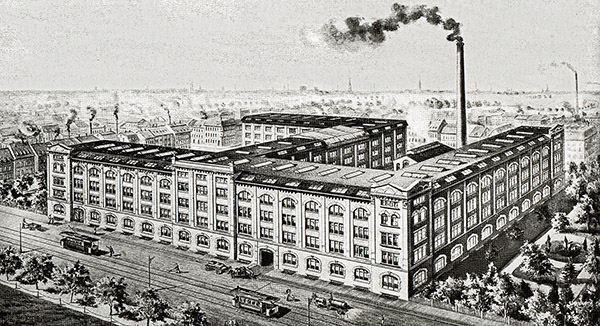
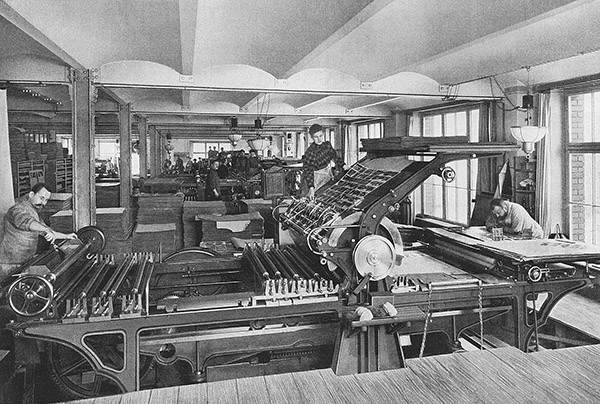
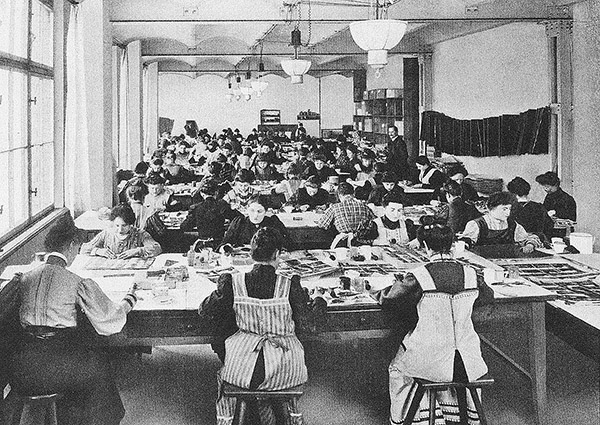
Some examples of printed matter from Dr. Trenkler & Co.
